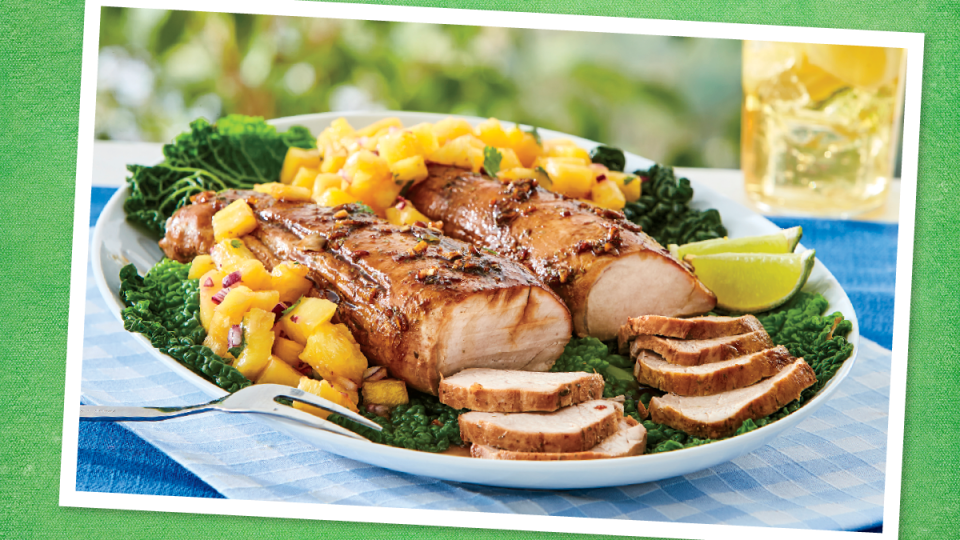I was unprepared for the height to which the fig tree would grow, or how the vast dinner-plate leaves would crash to the floor, almost in unison, each autumn. More pertinently, I had little notion of the number of fruits it would eventually produce, most of which are too high to reach even with the ladder. Perhaps it was the naivety of a new homeowner let loose on his first garden, or perhaps I failed to do my homework… whatever, 20 years on she is magnificent, with golden leaves like giants’ hands, almost translucent in the autumn sun, and still producing fruit.
The extraordinary weather this summer has sent the tree into shock, at one point dropping almost an entire harvest of unripe figs on the kitchen steps. The fruit I have salvaged has been of fair quality but not first rate, more of a fruit to cook than eat from the hand. But then that can said of many a shop-bought specimen. I rejoice in the fact that my greengrocers are rarely without a decent fig or two.
Nothing good will come from getting fancy with a fig. A splash of brandy, eau de vie or marsala, a shake of sugar and perhaps a spoonful of appropriate fruit jelly or jam, then into the oven is all you need. The fruit will emerge as soft as fondant, amid a moat of glowing juices.
Looking around for other kitchen contenders this week led me to a pile of creamy-white cauliflowers. I am partial to them raw, snapped into tight florets like little clouds on stalks, dressed with sour cream, paprika and poppy seeds, but with rain forecast, I opted for something more substantial.
Couscous can, if made in the traditional manner, take a while to steam. I am less sniffy about the instant stuff than some, finding it one of the more useful carbs to have around. You simply pour boiling water over it, leave it to swell, then run a fork through to separate and fluff up the grains. Tossed with roasted cauliflower, chickpeas and a brick red harissa dressing, it was a dish perfect for a midweek autumn supper.
Roast cauliflower couscous
I use quick-cooking fine couscous here – it is ready in minutes – but if you want to steam your own from scratch, then do. The cauliflower is best if not cut into too small pieces, but it is up to you. I like the contrast of texture of the little clouds of toasted cauliflower and the small grains of soft couscous. The broccoli, having a more open texture, will cook more quickly than the cauliflower, so add it halfway through cooking. The recipe is vegan, though I have been known to pour over a little melted butter together with the harissa dressing.
Serves 4 as a side dish, 2 to 3 as a main
cauliflower 1, medium (about 500g)
olive oil 4 tbsp
fine couscous 150g
chickpeas 1 x 400g tin
long-stemmed broccoli 400g
For the dressing:
harissa paste 3-4 tsp
olive oil 4 tbsp
red wine vinegar 2 tbsp
Preheat the oven to 200C/gas mark 6. Trim the cauliflower, removing any tatty leaves but keeping anything small and sweet, then break the head into large florets. Break the broccoli into small pieces.
Put the cauliflower florets into a roasting tin and toss with the olive oil and a seasoning of salt and pepper. Roast for 25-30 minutes, turning the cauliflower over once the underside is golden. Halfway through cooking, add the broccoli florets.
While the cauliflower is cooking, put the kettle on, put the couscous into a heatproof bowl, then when the water is boiling, pour enough over the couscous to cover it by a couple of centimetres and let it rest.
Make the dressing: put the harissa paste in a small jar, pour in the olive oil and the vinegar, then tighten the lid and shake firmly till mixed.
Check the cauliflower for doneness with a skewer – it should slide through the florets effortlessly. Drain the chickpeas and add them to the cauliflower then return the tin to the oven for a few minutes till they are heated through.
Remove the cauliflower and chickpeas from the oven. When the couscous has soaked up all the water, run the tines of a fork through it to separate the grains, then tip it into the roasting tin with the cauliflower and chickpeas, trickle the dressing through it then transfer to a serving plate.
Baked figs with fig jam and marsala

Such a fig-pig am I that they rarely make it as far as the oven. But figs bake deliciously, especially when cooked with a spoon or two of fruit jelly or jam – fig, apple or plum work splendidly. The sweetness of the dish means a tart dairy accompaniment is called for. I like soured cream with this, but a natural yoghurt, not too thick, is good, too.
Serves 4
figs 8
marsala, sweet or dry 6 tbsp
fig jam 6 tbsp
to serve soured cream or natural yoghurt
Preheat the oven to 200C/gas mark 6. Wipe the figs and trim the very ends of the stems (they can harden in the oven) then place the fruit stem side up in a baking dish. Leave a little room around each one.
In a small pan, warm the marsala over a moderate heat and stir in the jam. When the jam has melted pour it over the figs then put them in oven. Bake for about 30 minutes, till the juices around the fruit are bubbling and figs are soft and silky in texture.
Serve the fruit warm, spooning the juices over the figs as you do so, offering a bowl of yoghurt or soured cream to balance the sweetness.
Follow Nigel on Instagram @NigelSlater
from "recipes" - Google News https://ift.tt/GwTyHQY
via IFTTT

No comments:
Post a Comment